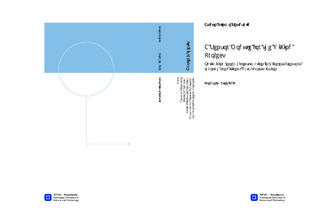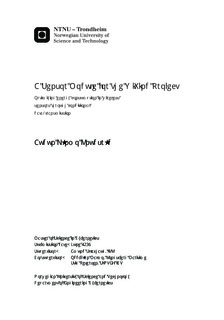| dc.contributor.advisor | Skavhaug, Amund | nb_NO |
| dc.contributor.advisor | Malmo, Oddbjørn | nb_NO |
| dc.contributor.advisor | Petersen, Stig | nb_NO |
| dc.contributor.author | Knudsrød, Audun Lønmo | nb_NO |
| dc.date.accessioned | 2014-12-19T14:11:13Z | |
| dc.date.available | 2014-12-19T14:11:13Z | |
| dc.date.created | 2014-10-01 | nb_NO |
| dc.date.issued | 2014 | nb_NO |
| dc.identifier | 751729 | nb_NO |
| dc.identifier | ntnudaim:10713 | nb_NO |
| dc.identifier.uri | http://hdl.handle.net/11250/261425 | |
| dc.description.abstract | This report examines the energy consumption in a wireless sensor module, a module which is part of the WiVind research project. The sensor module is to be surface-mounted on wind-turbine blades and alert a host system if a fault is detected in the blade structure. It must operate without an external power supply for several years at a time and thus reducing energy consumption is important to the project success.The report's results indicates that the most effective way to reduce energy consumption is to reduce the amount of data transmitted from the sensor module to its receiving host system.This reduction is made possible by using computing power placed in the sensor module to analyse the sensor data and transmit only the results of that analysis. The extra energy cost of that computing power is shown to be outweighed by energy reduction in reduced data transmission, thus resulting in lower system-wide energy consumption.The quantitative results in the report show that energy savings may first be reduced by approximately three quarters by using the module to analyse data, and that once this is in place, further energy savings are achieved by shutting down hardware circuits when they are not in use. Specifically, the average power level of the sensor module is reduced to 23 % by utilizing local data analysis and then to less than 3 % by switching off inactive hardware.Additional savings can be made by making the sensor module capable of transmitting data conditionally, only spending energy on communication when detecting a fault in the blade.These findings are of such a magnitude that they might be relevant for sensor modules which differs in configuration or tasks.In addition to the quantitative results, the design and operation of the sensor module prototype that was built to aquire the results is shown. | nb_NO |
| dc.language | eng | nb_NO |
| dc.publisher | Institutt for teknisk kybernetikk | nb_NO |
| dc.title | A Sensor Module for the WiVind Project: Optimizing energy consumption in wireless sensors through conditional data-transmission | nb_NO |
| dc.type | Master thesis | nb_NO |
| dc.source.pagenumber | 110 | nb_NO |
| dc.contributor.department | Norges teknisk-naturvitenskapelige universitet, Fakultet for informasjonsteknologi, matematikk og elektroteknikk, Institutt for teknisk kybernetikk | nb_NO |

